We study the neural circuits that
make auditory cognition possible. Our goal is
to understand how we assign meaning to sounds, how we attend to sounds or
ignore them, how we remember them, and how disorders of the brain
can affect these processes.
Of particular interest is how our responses to sounds can change depending on context, a phenomenon called behavioral flexibility. Behaving appropriately after changes in context requires that organisms rapidly modify their expectations, associations between cues and rewards, or attentional state. Our lab investigates these cognitive processes by addressing three questions:
Of particular interest is how our responses to sounds can change depending on context, a phenomenon called behavioral flexibility. Behaving appropriately after changes in context requires that organisms rapidly modify their expectations, associations between cues and rewards, or attentional state. Our lab investigates these cognitive processes by addressing three questions:
- What happens to the speed and accuracy of behavioral responses after a change in context?
- Where in the brain is information selected and re-routed to allow for different interpretations of the same stimulus?
- How do neural circuits implement this flexibility?
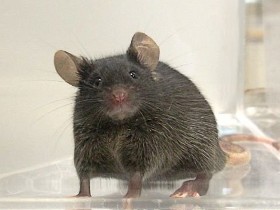
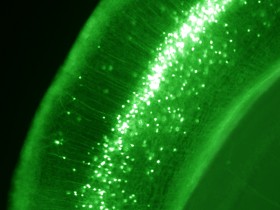

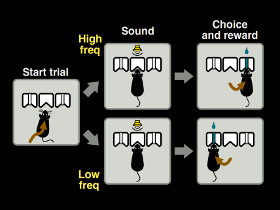
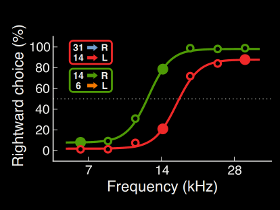
In our experiments, we use techniques such as optogenetics,
electrophysiology, and two-photon imaging, to monitor and
manipulate neuronal activity of specific cell types in
behaving rodents, together with
theoretical and computational approaches, to uncover the
mechanisms that underlie flexible behaviors.
We are committed to providing an inclusive environment and
to celebrate the diversity of our researchers. We welcome the unique
contributions every member of the lab can bring because of their
education, culture, ethnicity, race, sex, sexual orientation,
gender identity and expression, nation of origin, age, religion,
or disability.
We acknowledge that our lab is located on Kalapuya Ilihi -- the
traditional indigenous homeland of the Kalapuya people, who were
dispossessed of their homeland by the U.S. Government over several
years. Today, descendants are citizens of the Confederated Tribes
of Grand Ronde Community of Oregon and Siletz Indians of Oregon.
Members
Santiago Jaramillo

Principal Investigator
Dept. of Biology
Principal Investigator
Dept. of Biology

Matt Nardoci
Graduate student
co-advised (Murray)
Graduate student
co-advised (Murray)

JoAnna O'Neill
Graduate student
Graduate student

Ramzy Al-Mulla
Graduate student
Graduate student
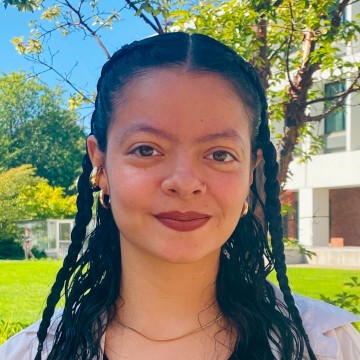
Lizeth Giraldo
Research assistant
Research assistant

Sara Rezazadeh
Research assistant
Research assistant

Alyssa Mayeri
Undergrad researcher
Undergrad researcher

Naomi McLaughlin
Undergrad researcher
Undergrad researcher

Dustin Sadiq
Undergrad researcher
Undergrad researcher

Landen Ratcliffe
Undergrad researcher
Undergrad researcher
...and here is a list of past members.
Selected publications
- Horrocks M, Mohn JL, Jaramillo S (2025). The serotonergic psychedelic DOI impairs deviance detection in the auditory cortex. Journal of Neurophysiology. 133(2):388-398.
- Baese-Berk M, Jaramillo S, Staggs C (2025). Learning new speech sounds in remote and in-person protocols: Benefits, drawbacks, and considerations for future research. Laboratory Phonology. doi: https://doi.org/10.16995/labphon.16542
- Mohn JL, Baese-Berk MM, Jaramillo S (2024). Selectivity to acoustic features of human speech in the auditory cortex of the mouse. Hearing Research. 441:108920. (Full text: PMC10542132)
- Lee EK, Gül AE, Heller G, Lakunina A, Jaramillo S, Przytycki PF, Chandrasekaran C. (2024). PhysMAP - interpretable in vivo neuronal cell type identification using multi-modal analysis of electrophysiological data. bioRxiv 2024.02.28.582461.
- Schmid C, Haziq M, Baese-Berk MM, Murray JM, Jaramillo S (2024). Passive exposure to task-relevant stimuli enhances categorization learning. eLife 12:RP88406.
- Hulsey D, Zumwalt K, Mazzucato L, McCormick DA, Jaramillo S (2024). Decision-making dynamics are predicted by arousal and uninstructed movements. Cell Reports. 43(2): 113709.
- Nardoci MB, Lakunina AA, Henderling DC, Pedregon JC, Mohn JL, Jaramillo S (2022). Sound-Evoked Responses of Distinct Neuron Classes From the Tail of the Striatum. eNeuro. 14 September 2022, 9 (5).
- Lakunina AA, Menashe N, Jaramillo S (2022). Contributions of Distinct Auditory Cortical Inhibitory Neuron Types to the Detection of Sounds in Background Noise. eNeuro. 15 February 2022, 9 (2).
- Lakunina AA, Nardoci MB, Ahmadian Y, Jaramillo S (2020). Somatostatin-expressing interneurons in the auditory cortex mediate sustained suppression by spectral surround. Journal of Neuroscience. 40(18):3564-3575.
- Hermoso-Mendizabal A, Hyafil A, Rueda-Orozco PE, Jaramillo S, Robbe D, de la Rocha J (2020). Response outcomes gate the impact of expectations on perceptual decisions. . Nature Communications 11, 1057.
- Guo L, Weems JT, Walker WI, Levichev A, Jaramillo S (2019). Choice-selective neurons in the auditory cortex and in its striatal target encode reward expectation. Journal of Neuroscience. 39 (19):3687-3697.
- Ponvert ND and Jaramillo S (2019). Auditory thalamostriatal and corticostriatal pathways convey complementary information about sound features. Journal of Neuroscience. 39 (2):271-280.
- Guo L, Walker WI, Ponvert ND, Penix PL, Jaramillo S (2018). Stable representation of sounds in the posterior striatum during flexible auditory decisions. Nature Communications. 9:1534.
- Guo L, Ponvert ND, Jaramillo S (2017). The role of sensory cortex in behavioral flexibility. Neuroscience. 345:3-11.
- Gimenez TL, Lorenc M, Jaramillo S (2015). Adaptive categorization of sound frequency does not require the auditory cortex in rats. Journal of Neurophysiology. 114(2):1137-4518.
- Ahrens S, Jaramillo S, Yu K, Gosh S, Hwang G, Paik R, Lai C, He M, Huang JZ and Li B (2015). ErbB4 regulation of a thalamic reticular nucleus circuit for sensory selection. Nature Neuroscience. 18:104-111.
- Jaramillo S and Zador AM (2014). Mice and rats achieve similar levels of performance in an adaptive decision-making task. Front. Syst. Neurosci. 8:173.
In the news! — The Scientist — The Atlantic — Slashdot — The Times Beacon — and many more - Jaramillo S, Borges K and Zador AM (2014). Auditory thalamus and auditory cortex are equally modulated by context during flexible categorization of sounds. Journal of Neuroscience. 34(15):5291-5301.
- Jaramillo S and Zador AM (2011). The auditory cortex mediates the perceptual effects of acoustic temporal expectation. Nature Neuroscience. 14(2):246-51.
- Jaramillo S and Pearlmutter BA (2007). Optimal Coding Predicts Attentional Modulation of Activity in Neural Systems. Neural Computation. 19:1295-1312.
- Jaramillo S and Pearlmutter BA (2006). Use your powers wisely: resource allocation in parallel channels. IEEE Workshop on Machine Learning for Signal Processing (MLSP). 2006:21-26
- Jaramillo S and Pearlmutter BA (2004). A Normative Model of Attention: Receptive Field Modulation. Neurocomputing, 58-60:613-618.
